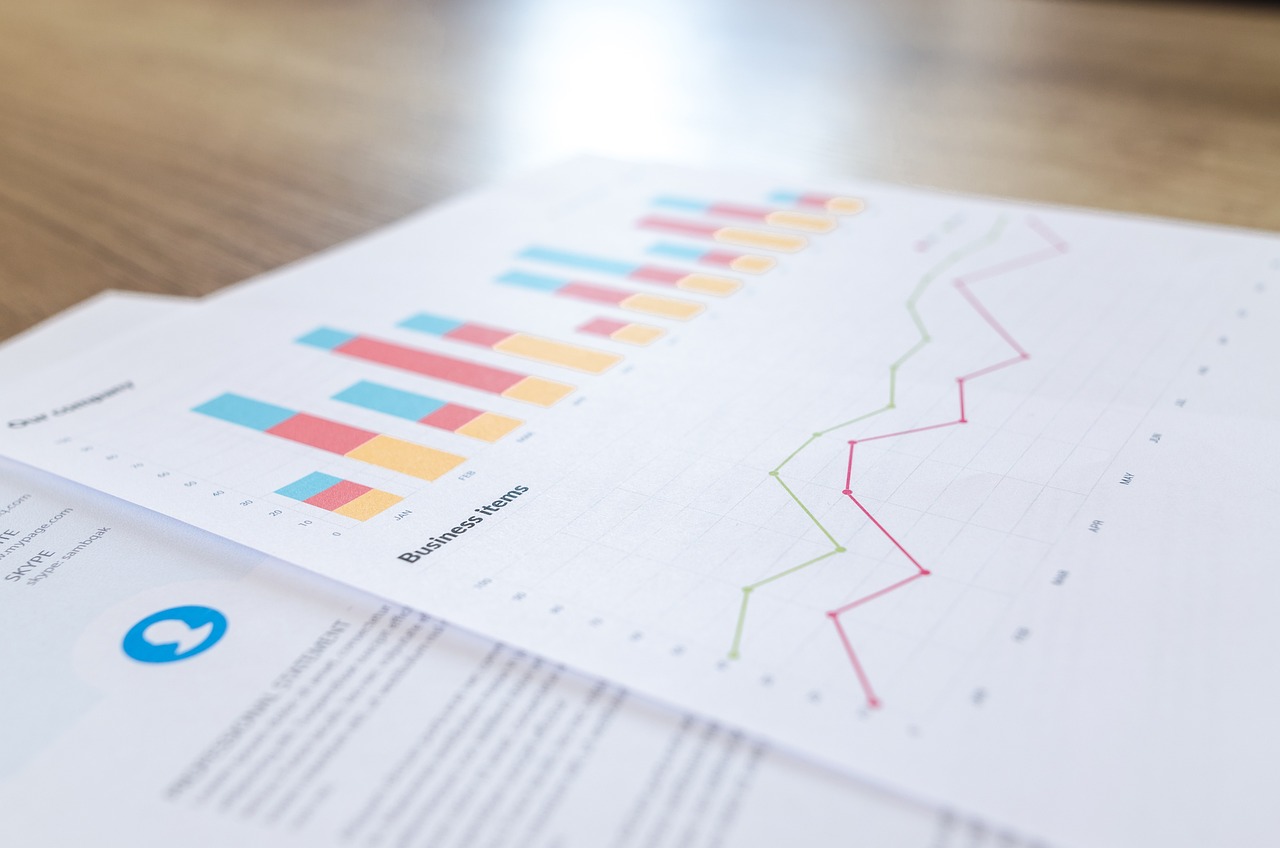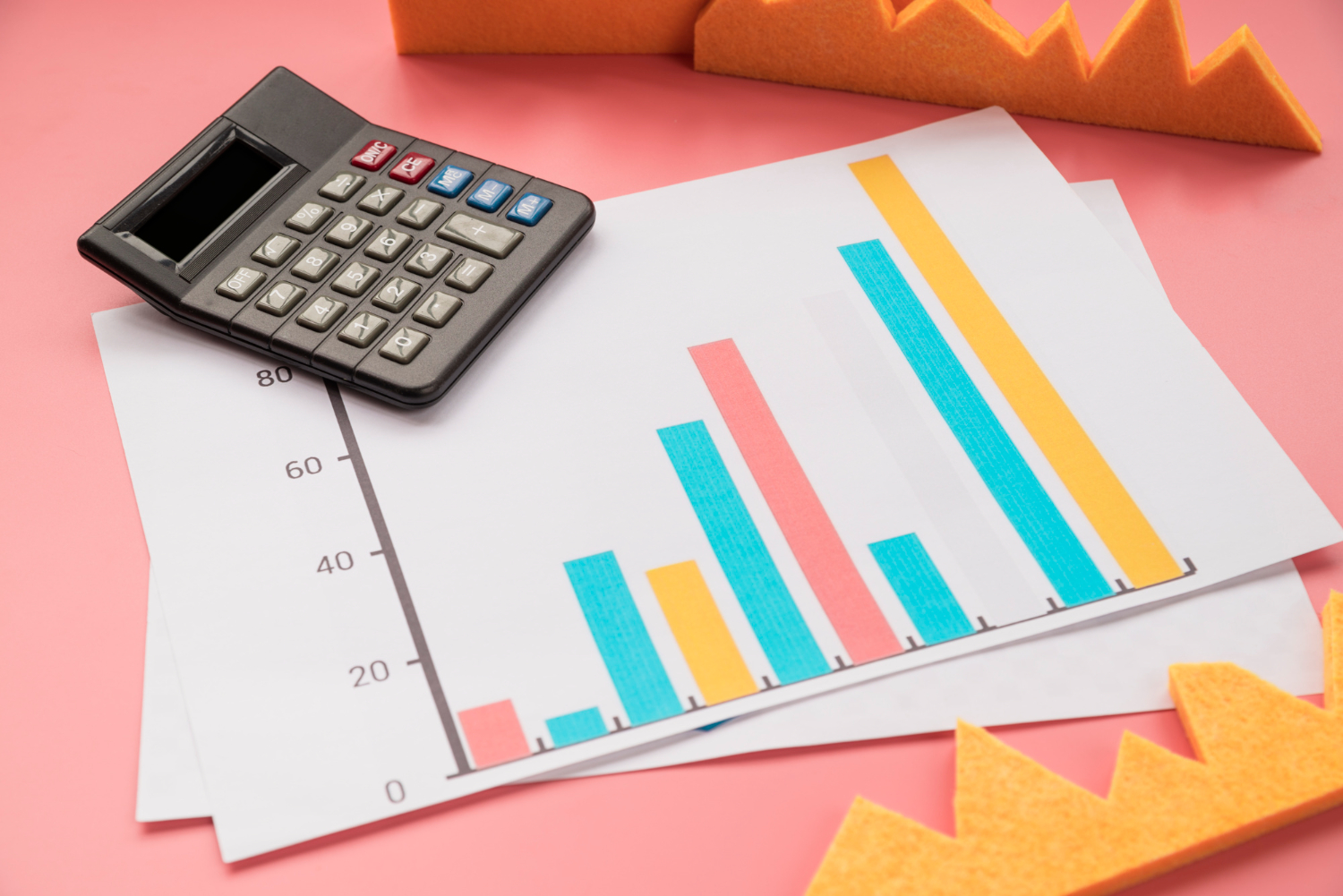

Financial forecasting and planning are essential for any business, big or small. However, traditional financial analysis methods can be time-consuming and resource-intensive. This is where ChatGPT, a large language model trained by OpenAI, can provide a valuable tool to assist your business financial forecasting and planning.
In this blog post, we will explore how ChatGPT can be used for financial forecasting, a crucial component of any comprehensive business strategy. We will also discuss the benefits and limitations of using ChatGPT for financial analysis and modeling, and recommend using it in conjunction with other tools for a more comprehensive approach.

Examples of how ChatGPT can be used for financial forecasting
Cash flow forecasting
Businesses often struggle with managing their cash flow, which can lead to financial problems down the line. ChatGPT can help by analyzing the business’s financial data and generating cash flow forecasts for the coming months or years. This can help the business plan ahead and make informed decisions about spending and investment.
Sales forecasting
Businesses need to know how much revenue they can expect to generate in order to plan their operations and investments. ChatGPT can help by analyzing historical sales data and identifying trends and patterns. Based on this analysis, ChatGPT can generate sales forecasts for the coming months or years.
Budget planning
Businesses need to create budgets to ensure they are spending within their means and not overspending. ChatGPT can help by analyzing the business’s financial data and generating budget plans based on historical spending patterns and future projections.
Financial risk assessment
Businesses face many financial risks, such as market volatility, competition, and unexpected expenses. ChatGPT can help identify potential risks and provide recommendations for how to mitigate them. For example, ChatGPT could analyze the business’s financial data and identify areas where the business is overexposed to risk, such as over-reliance on a single supplier or customer.
Tax planning
Businesses need to plan their taxes carefully to avoid penalties and minimize their tax liability. ChatGPT can help by providing guidance on tax planning strategies, such as taking advantage of deductions and credits, or structuring the business in a tax-efficient manner.
You might also be interested in our recent write-up: 11 Ways to Use ChatGPT for Your Business
How to create a financial forecast without historical data
Creating a financial forecast is an essential step for any business looking to achieve its goals and remain financially stable. However, for new businesses or those launching new products, it can be challenging to create a forecast without any historical data to refer to.
In such situations, it’s crucial to understand the fundamental principles of financial forecasting and develop a strategy that takes into account all the variables that could impact your business’s financials. To help you navigate this process, there is a comprehensive guide available that provides step-by-step instructions on how to create an effective financial forecast even without historical data. This guide includes essential tips and techniques that can help you make accurate predictions and plan your business finances with confidence.
- Recommended Reading: 6 ways financial forecasting isn’t what you think it is
Cash flow forecasting
Example scenario:
Let’s say you are the owner of a small retail business that sells clothing and accessories. You want to forecast your cash flow for the next six months to help you make informed decisions about inventory management and other expenses.
Step-by-Step Guide:
- Collect financial data
The first step is to collect your financial data, including your sales, expenses, and accounts receivable and payable. You can use a spreadsheet to organize this data.
If you’re just getting started with cash flow analysis – you might want to keep it simple with our free cash flow forecast template. - Analyze historical data
Once you have collected your financial data, you can analyze it to identify trends and patterns. For example, you may notice that your sales are highest in the summer months and lowest in the winter months. You can use this information to generate a forecast for the next six months. - Input data into ChatGPT
You can input your financial data into ChatGPT and ask it to generate a cash flow forecast for the next six months. You can also ask ChatGPT to identify any potential risks or opportunities that you should be aware of. - Review and analyze results
Once ChatGPT has generated the cash flow forecast, you can review and analyze the results. You can use this information to make informed decisions about inventory management, purchasing, and other expenses. For example, if ChatGPT predicts that you will have a cash surplus in the next few months, you may want to invest in new inventory or marketing initiatives. - Monitor and adjust as needed
It’s important to monitor your actual cash flow and adjust your forecast as needed. If your actual cash flow deviates significantly from your forecast, you may need to adjust your inventory management or other expenses to stay within your budget.
Please note that if you have additional supporting documents or receipts for this expense, you can use the ChatGPT File Uploader Extended to upload any file and data for ChatGPT’s review.
However, please also be careful and ensure that you don’t upload any sensitive or confidential information to avoid potential security issues.

Sales forecasting
Example scenario:
You are the owner of a small business that sells handmade jewelry. You want to forecast your sales for the next six months to help you plan your inventory and marketing strategies.
Step-by-step guide:
- Collect sales data
The first step is to collect your sales data for the past year or more. You can use a spreadsheet or other software to organize this data. - Analyze historical data
Once you have your sales data, you can analyze it to identify trends and patterns. For example, you may notice that your sales are highest during the holiday season or during certain events. - Input data into ChatGPT
You can input your historical sales data into ChatGPT and ask it to generate a sales forecast for the next six months. You can also provide ChatGPT with any additional information that may impact sales, such as planned marketing initiatives or new product launches. - Review and analyze results
Once ChatGPT has generated the sales forecast, you can review and analyze the results. You can use this information to plan your inventory levels, marketing strategies, and other activities. - Monitor and adjust as needed
It’s important to monitor your actual sales and adjust your forecast as needed. If your actual sales deviate significantly from your forecast, you may need to adjust your inventory levels or marketing strategies to stay on track.
Check out this article for a more comprehensive guide on the importance of sales forecasting.
Budget planning
Example scenario:
You are the owner of a small restaurant and you want to create a budget plan for the next year to help you manage expenses and plan for growth.
Step-by-Step Guide:
- Collect financial data
The first step is to collect your financial data, including your income and expenses. You can use a spreadsheet or other software to organize this data. - Analyze historical data
Once you have your financial data, you can analyze it to identify trends and patterns. For example, you may notice that your sales are highest during certain months or on certain days of the week. - Input data into ChatGPT
You can input your financial data into ChatGPT and ask it to generate a budget plan for the next year. You can also provide ChatGPT with any additional information that may impact expenses, such as planned renovations or equipment purchases. - Review and analyze results
Once ChatGPT has generated the budget plan, you can review and analyze the results. You can use this information to make informed decisions about your expenses and plan for growth. - Monitor and adjust as needed
It’s important to monitor your actual income and expenses and adjust your budget plan as needed. If your actual income or expenses deviate significantly from your budget plan, you may need to adjust your spending or revenue strategies to stay on track.
Check out this informative article for a detailed example of how to use financial scenario modeling and budgeting for restaurants.
Financial risk assessment
Example scenario:
You are the owner of a small manufacturing business and you want to assess the financial risks associated with a potential expansion into a new market.
Step-by-Step Guide:
- Collect financial data
The first step is to collect your financial data, including your income statement, balance sheet, and cash flow statement. You can use a spreadsheet or Brixx’s FREE templates to organize the data. - Analyze historical data
Once you have your financial data, you can analyze it to identify trends and patterns. For example, you may notice that your profit margins are declining or that your cash flow is becoming increasingly strained. - Identify risks and mitigation strategies
You can work with ChatGPT to identify potential financial risks associated with the expansion, such as increased operating expenses or reduced demand for your products. ChatGPT can also provide guidance on how to mitigate these risks, such as by developing a contingency plan or adjusting your pricing strategy. - Assess financial health
You can use ChatGPT to assess your overall financial health, including your liquidity, solvency, and profitability. This can help you identify any potential weaknesses or areas where you may need to improve. - Review and analyze results
Once ChatGPT has generated the financial risk assessment, you can review and analyze the results. You can use this information to make informed decisions about whether to move forward with the expansion and what steps to take to minimize financial risks. - Monitor and adjust as needed
It’s important to monitor your financial performance and adjust your strategies as needed. If your financial performance deviates significantly from your projections, you may need to adjust your strategies or seek outside assistance to mitigate risks.
Tax planning
Example scenario:
You are the owner of a small consulting business and you want to plan your taxes for the upcoming year to minimize your tax liability.
Step-by-step guide:
- Collect financial data
The first step is to collect your financial data, including your key financial reports. - Analyze historical data
Once you have your financial data, you can analyze it to identify trends and patterns. For example, you may notice that your revenue is increasing or that your expenses are declining. - Input data into ChatGPT
You can input your financial data into ChatGPT and ask it to generate a tax planning report for the upcoming year. You can also provide ChatGPT with any additional information that may impact your tax liability, such as planned investments or changes in your business structure. - Identify tax planning strategies
ChatGPT can help you identify tax planning strategies, such as taking advantage of tax credits or deductions, deferring income, or investing in tax-exempt securities. ChatGPT can also provide guidance on how to implement these strategies effectively. - Review and analyze results
Once ChatGPT has generated the tax planning report, you can review and analyze the results. You can use this information to make informed decisions about how to minimize your tax liability for the upcoming year. - Monitor and adjust as needed
It’s important to monitor your tax situation throughout the year and adjust your strategies as needed. If your financial situation or tax laws change, you may need to adjust your strategies or seek outside assistance to minimize your tax liability.
Pros and cons of using ChatGPT for financial forecasting and planning
While ChatGPT can provide valuable insights and recommendations based on financial data, there are some limitations to its capabilities when it comes to financial forecasting and planning. Here are some pros and cons of using ChatGPT for financial forecasting and planning:
Advantages
Faster analysis
ChatGPT can quickly analyze financial data and provide insights and recommendations, which can save time and effort compared to manual analysis.
Access to machine learning
ChatGPT uses machine learning algorithms to analyze financial data, which can provide more accurate and relevant insights than traditional statistical methods.
Ability to analyze unstructured data
ChatGPT can analyze unstructured data, such as text or images, which can provide additional insights that may be missed by traditional financial analysis methods.
Disdvantages
Limited scope
ChatGPT’s insights are limited to financial data and may not take into account other important factors that can impact financial forecasting and planning, such as market trends, customer behavior, or regulatory changes.
Dependence on quality of natural language input
ChatGPT’s ability to analyze and interpret financial data depends on the quality of the natural language input it receives. If the input is ambiguous, incomplete, or unclear, the resulting insights and recommendations may be less accurate or relevant.
Limited customization
ChatGPT’s algorithms are designed to provide general insights and recommendations, which may not be customized to the specific needs of a business.
Lack of industry-specific knowledge
While ChatGPT can analyze financial data and provide general insights, it may not have specific knowledge of your industry or market. This could limit its ability to provide relevant recommendations for your business.
It’s important to consider both the pros and cons of using ChatGPT for financial forecasting and planning, and to evaluate whether it is the right tool for your business needs. Depending on your business goals and the complexity of your financial data, ChatGPT may be a useful tool to supplement other financial modeling and analysis methods, but it should not be relied on exclusively.
Using predictive analytics for financial forecasting
If you’re interested in taking your financial forecasting to the next level, you might want to explore the use of predictive analytics for financial forecasting.
Predictive analytics involves using data, statistical algorithms, and machine learning techniques to identify the likelihood of future outcomes based on historical data. By using predictive analytics in financial forecasting, businesses can gain a competitive advantage by making better-informed decisions, reducing risks, and improving their overall financial performance.
Benefits of using financial software for financial forecasting and planning
While ChatGPT can provide valuable insights and recommendations based on your financial data, there are some limitations to its capabilities. This is where Brixx, a powerful financial modeling tool, can offer a multitude of additional benefits to businesses.
- Enables you to perform “what if” analysis and scenario modeling to explore different business scenarios and plan accordingly
- Provides more detailed and accurate financial models that account for a wider range of factors and variables
- Automatically connects your forecasts across different elements and sections, so any changes made in one area are reflected throughout the entire forecast.
- Minimizes the likelihood of errors or mistakes when updating or modifying elements of your forecast, reducing the potential for miscalculations and inaccuracies.
- Does not require an ongoing conversation with an AI chatbot to update or change elements of your forecast, eliminating the need for manual data entry and ensuring that all your information is saved accurately and securely.
- Provides a platform for collaboration and communication with stakeholders, such as investors, lenders, and partners
Integrating ChatGPT with other financial software
Combining other financial software like Brixx and ChatGPT can provide even greater benefits for your business. For example, by using the ChatGPT AI tool to generate insights and recommendations, you can then use Brixx to perform “what if” analysis and scenario testing to explore the impact of different business decisions and strategies. This can help you make more informed decisions and create more accurate financial plans.
Be sure to check out this recent article that explores another innovative use of ChatGPT for writing effective business plans.
If you’re interested in exploring the benefits of combining Brixx and ChatGPT for financial forecasting and planning, we encourage you to check out our website and sign up for a FREE trial. With Brixx and ChatGPT, you can gain the insights and guidance you need to make informed decisions about your business finances.













